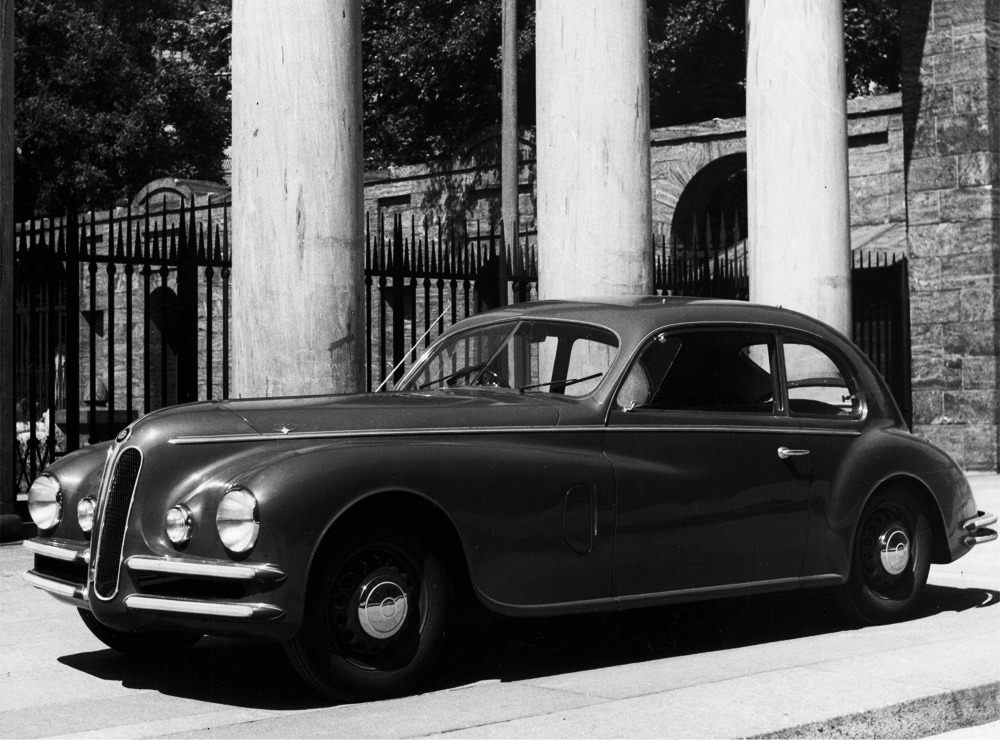The story of Touring Superleggera
The early years In early 1926, two lawyers from Milan – Felice Bianchi Anderloni and Gaetano Ponzoni – decided to leave behind the world…


The Bristol 401 Berlinetta by Touring Superleggera.
The Bristol 401 Berlinetta, designed by Touring Milano, epitomizes the post-war transition of Bristol from aircraft manufacturing to car production. Leveraging its aircraft engineering expertise, Bristol crafted some of the most distinctive and aerodynamically refined automobiles of the early postwar era. The 401 is a prime example of this, characterized by its lightweight aluminum coachwork made possible through the superleggera construction system licensed from Carrozzeria Touring. Bristol’s meticulous attention to detail is evident in features such as the streamlined pushbutton releases for opening panels, showcasing the innovative and effective design elements that set Bristol apart. While both the 401 and the 402 used an improved version of the BMW-derived M328 engine first seen in the Bristol 400, they boasted significantly updated body styles. The pre-war lines of the 400 were modernized, resulting in a more spacious interior that could comfortably seat five passengers. Distinctive styling elements of the 401 and 402 include the concealed door handles, operable by pressing a button, and a narrow grille reminiscent of contemporary BMW models. The front end was more curved compared to the 400, contributing to an impressive drag coefficient of 0.36, a figure still competitive by 21st-century standards. Under the hood, the updated 2.0-liter inline-six engine produced 85 horsepower, an improvement facilitated by the use of Solex carburetors. This enhanced performance, combined with the car’s superior aerodynamics, resulted in notable driving capabilities. The engine was mounted at the front with rear-wheel drive, and the car featured a four-speed manual transmission. The suspension system was independent, with front transverse leaf springs and swing arms, and a rear torsion bar with a live axle. The car was equipped with rack-and-pinion steering and hydraulic drum brakes on all four wheels. Bristol produced 611 units of the 401, making it one of the more numerous models in their lineup, while the 402 was far rarer, with only 23 units produced. Of these, only 13 survived into the 21st century, making the 402 highly coveted by collectors. In a 1952 road test by *The Motor* magazine, the 401 demonstrated a top speed of 156.6 km/h and could accelerate from 0 to 97 km/h in 15.1 seconds. Fuel consumption was recorded at 13.6 liters per 100 kilometers. At the time, the model tested cost £3,532, including taxes, reflecting its premium engineering and design.




The early years In early 1926, two lawyers from Milan – Felice Bianchi Anderloni and Gaetano Ponzoni – decided to leave behind the world…
Missing or wrong informations?
Carrozzieri-Italiani.com relies on thousend of users who help to populate the database. We do not guarantee the accuracy of the informations. Contact us if you want to contribute.
